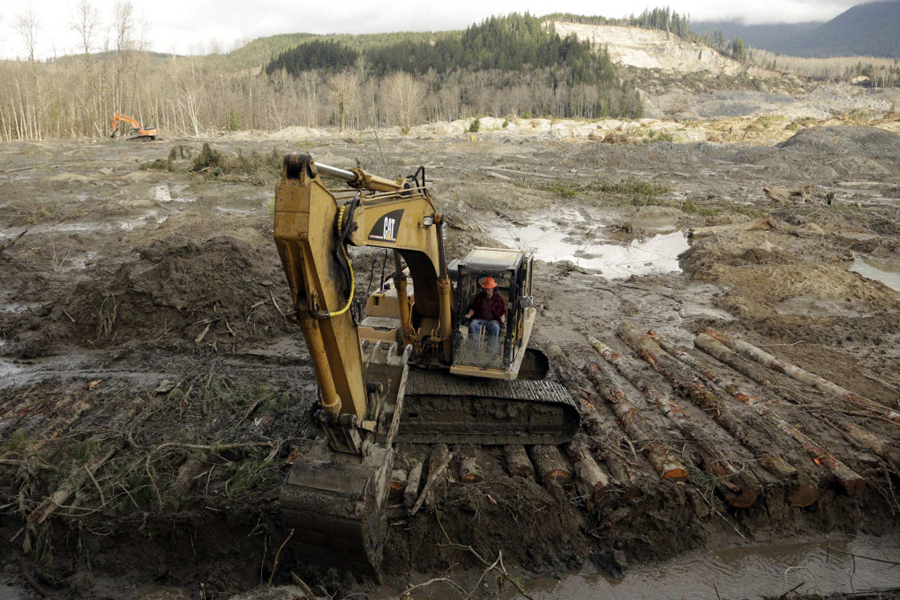Washington mudslide: Toll rises to 29 as hopes fade of finding all the missing
Loading...
The death toll from the mudslide in a Washington town rose to 29 on Wednesday, as rescuers struggled to slog through millions of tons of muck spread over a full square mile.
Long after the hope of finding survivors had faded, hopes were diminishing, too, of finding the remaining 20 people listed as missing and feared dead.
More than a week after the massive mudslide boomed into Oso, a rural town 59 miles north of Seattle, rescue crews and community members are contending with treacherous, and nearly impossible, conditions. In some places, the mud is up to 80 feet deep, and it varies between soupiness, making it too unstable to hold rescue equipment, and the consistency of hardened concrete, making it impenetrable to diggers.
"That's going to be hallowed ground out there," Ron Brown, a Snohomish County official, told Reuters last week, suggesting that not all of the victims are likely to be pulled from the rubble.
On March 22, a water-loosened side of the North Cascades Mountains careened downward, charting a ragged, brutal course into Oso, a petite town of less than 200 people, nested at the foot of the mountains’ picturesque but uneasy slopes.
As of 7:30 a.m. on April 2nd, 20 people were still missing in the greyish mud that buried what was once a quiet and tight-knit town. Last week, some 90 people had been listed as missing, but most of that number was revealed over the weekend to duplicate people who turned out to have been outside of Oso when the mudslide hit.
Not since the day of the slide, when rescuers managed to get several injured people out of the mess, has anyone been found alive in the disaster site.
“We always want to hold out hope, but I think we have to at some point expect the worst," Snohomish County Executive Director Gary Haakenson told reporters, at a news conference on Friday evening.
Everywhere, the mud contains the uncountable pieces of 49 splintered homes; somewhere, it contains the 20 still missing people.
All that sprawl and all that wreckage have been challenging enough to rescuers, but officials said this week that even more difficulties have emerged in the hunt for victims.
This week, authorities acknowledged that some of the human remains being recovered from the site are partial, complicating identification attempts and putting a dim light on future efforts to recover victims.
Authorities have also expressed concern that the snowmelt from the Cascade Mountains could within three to four weeks flood sections of the search zone. The river that flows through the site is partially dammed, with debris covered in spots by 25 feet of water. That could increase to 100 feet if the river remains blocked.
The US Army Corps of Engineers is exploring options for building a channel that could alleviate the expected flooding, but those plans are complicated by concerns that such a diversion could flood a nearby highway, Reuters reported.
On Monday, The Snohomish County Medical Examiner’s Office released the first full list of the names of the identified dead, as well as the names of those still missing in the disaster. The office had previously released the names of victims as each person was identified, but not as a comprehensive list.
As of Wednesday morning, 23 victims had been identified, including three people who were added to the list on April 1st. Six victims have been found but have not yet been identified, according to The New York Times.
Funerals for the dead are expected to begin this weekend, according to NBC.






